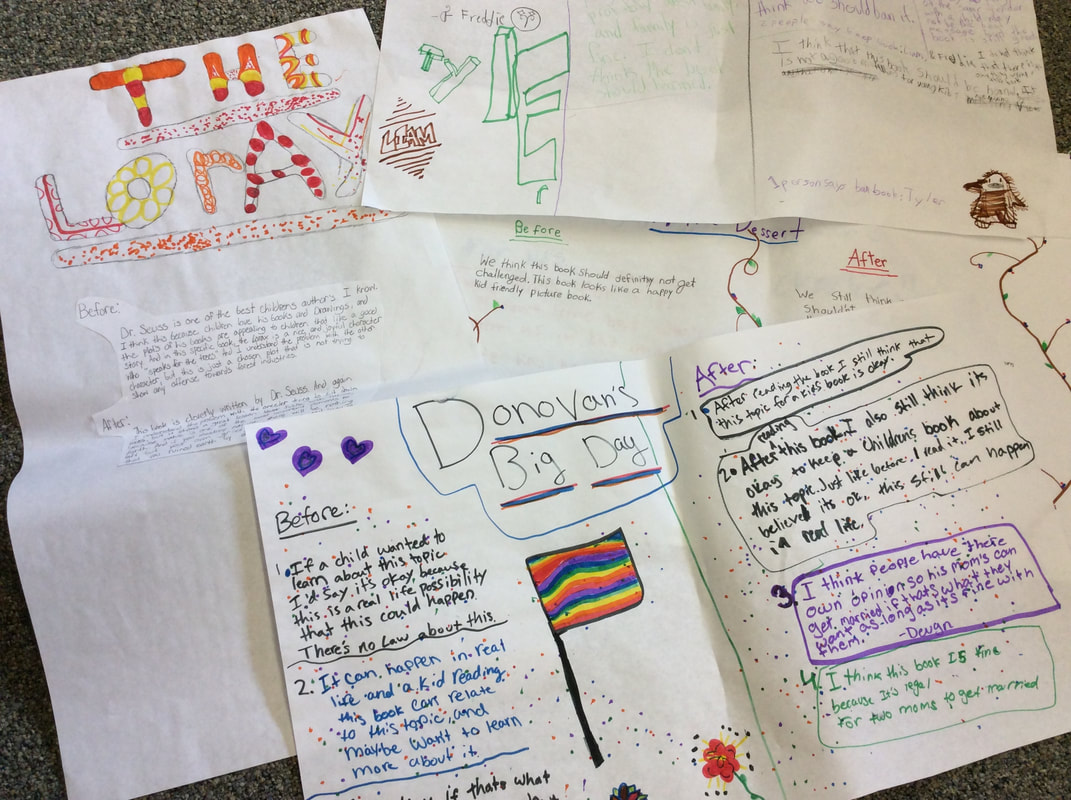| John D. Hardy Elementary School Library Lisa Rogers, Library Teacher What? Harry Potter banned? Scary Stories II? The Lorax--challenged? My students are outraged that someone would limit their freedom to read these favorites. Yet as we delve into the specifics, they become cautious. What about that masked man with a gun threatening a sleeping child in Steven Kellogg’s Pinkerton, Behave! What about the concealed nudity in Amy Timberlake’s The Dirty Cowboy—a book that first-graders find hilarious and but that fifth-graders find embarrassing? |
It’s a unit that is sparked by Banned Books Week, but depending on my classes’ dynamics, and activities like The Library of Congress’ Letters about Literature writing contest and classroom research projects, I deliver the unit at the time of year that works best for my students. It’s particularly helpful to have built a trust community with the expectation that we can have respectful discussions and hear all points of view. It’s helpful that students have the maturity to dive into these deep discussions. Sometimes that can take time.
I begin by asking students: Should a book be on the library shelves if some people think it’s not appropriate?
This one question leads to rich discussions about what appropriate means, who decides what that means, and whether all people like the same books. We talk about what Freedom to Read means, and we discuss the First Amendment to the United States Constitution.
They come up with solutions: delineate books for readers of different ages. Create separate sections. We look around the library. Hasn’t that been done, by separating picture books from chapter books? Then I ask: What happened when you were in first grade and wanted to take out Harry Potter? Did I say that you couldn’t? I ask: What if there is one part in the book that you don’t like? How do you decide whether to read it or not? What can you do when you don’t like a book? And, who decides what you read? We discuss gatekeepers, from editors and publishers to bookstores, teachers, librarians, and parents.
They form small groups to investigate some of the challenged books, and write their impressions before a careful read; then afterward. They come up with a conclusion of whether the books should stay in the library or not. Then, they present their thinking to the class. Mostly, they side with their freedom to read the books they choose. Sometimes, they think otherwise. Either way, they’ve come to their own conclusions through thought and investigation, which is just as it should be.




